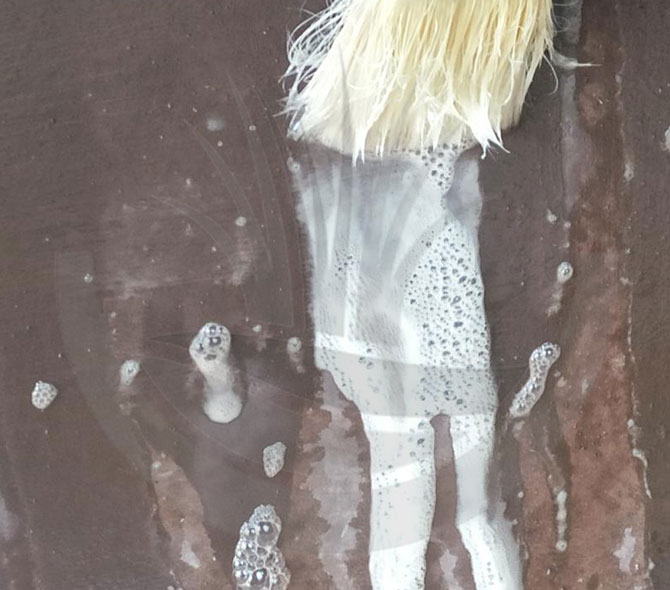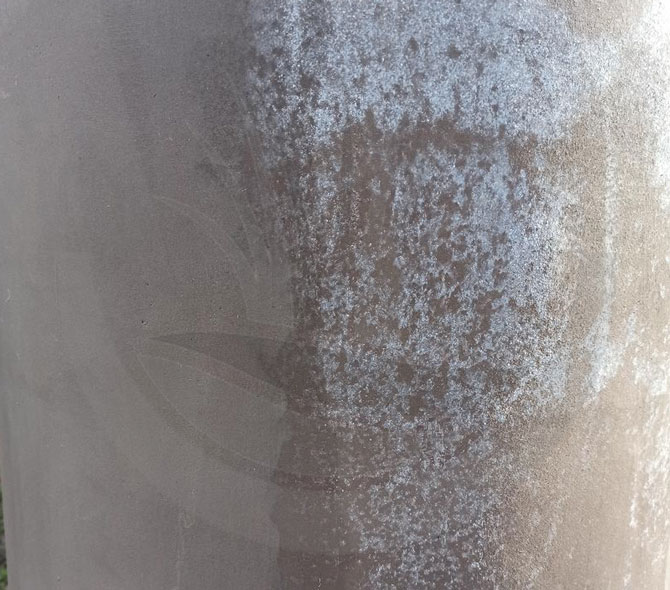
Terracotta, for those who don't know, is a porous and breathable material.
This feature is important because the pots produced with this material help the plants to live well, thanks to
the good oxygenation that the porosity guarantees to the roots.
Unfortunately, as often happens, every coin has its reverse side and porosity is also the cause of the transmission
of water particles from the inside of the pot to the outside, particles which, as we understand, contain not
only distilled water H2O but everything that it can be transported and that passes between the pores, such
various impurities contained in the soil, in the fertilizers, in the water used to water the plants.
Nothing dramatic, God forbid, but it is good to be aware of it when we purchase terracottas.
The substances transported to the outside are deposited on the surface of the container and, over time,
become visible and age the pot itself. A matter of aesthetics and personal tastes, of course, but someone may not like
that his beautiful vase has changed its look.
In this article we see how to clean stained jars, using cheap products available at the supermarket and a little workout. You should know that calcium carbonate reacts with acetic or hydrochloric or muriatic acid. You can also use this product to clean the glass of the shower in your bathroom. Leaving aside the chemical reasons for which this occurs, the acid dissolves the limestone and makes it soluble and so on washable. Obviously, a greater quantity of limestone will have to be used a greater quantity of acid, but the result is what you see in the figure. We used a brush to have more friction and remove the stain more vigorously, but we could also have used a sprayer to mist the acid. It is important to avoid, as written in the warnings, contact with hands and eyes, but also to carry out cleaning outdoors, since the reaction gases could be irritating for someone. Nothing dangerous anyway.
Terracotta gets stained because it is a porous and breathable material. The pores allow the exchange of oxygen and also other substances, such as mineral salts contained in the soil, in fertilizers or simply in the clay mixture.
Once the acid has been passed and the whole vase is cleaned, due to the effect of the pores in the terracotta, this process of transmission / deposit of material from the inside will continue until it becomes visible again and cleaning must be repeated. To avoid this (at least for a while), the external surface of the pot can be treated with a water-repellent product. These solutions generally contain silicons or siloxane material which are also breathable and are able to reduce the sizes of the pores and prevent the passage of materials but do not block oxygen. The roots will be oxygenated equally and the pot will be kept cleaner. Unfortunately, the water repellent action is not eternal because the siloxanes degrade with the weather and after 1-2 years they will have lost their protective action.



